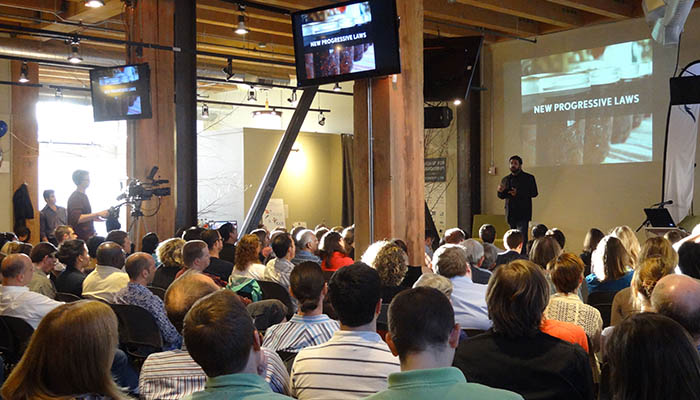
Raising money is a sales process, one in which a very small percentage of customers want what you are selling. Following on “If you think it… they will fund“, if you actually want that funding, you’ll need to talk with investors.
How many investors??? More than most entrepreneurs think.
A conversation with a potential fledgling led to this post. He was frustrated at failing to find any seed funding, and when I asked him how many investors he had talked to, his answer was 40. Forty to him was clearly a lot. Far more than he thought necessary.
I too am an entrepreneur, one who has spent over 20 years starting companies, and most of that time raising money from investors. I can thus relate to how hard the process is, and how much of a distraction it feels vs. running the business. None the less, the only way through the fundraising process is by talking with investors. A lot of investors.
For my own fundraising effort, I keep detailed records on every potential investor I’ve ever talked to. Looking back at one of my startups, that list grew to 800 people before the first year was over. Not all of those people were investors, but you never are quite sure until you ask, and even if they are not investors themselves, they may be able to introduce you to an investor or two that they know. By the time the company was three years old, that contact list included over 5,000 people in total, and over 400 potential investors.
Fewer than 1 in 10 of those 400 investors made an investment. That means fewer than 1 in 125 of those 5,000 people turned out to be actual investors, willing to write a check to support a conscious company.
That 1 in 125 ratio is just 0.08%. A tiny percentage, but one that is not unreasonably low when it comes to fundraising.
Which leads to my advice for entrepreneurs who think they are raising money. Set aside time every day to find at least one new potential investors. 1 per day for 300 working days per year is just 300 potential investors. Match my 0.08% close rate, and you’ll have two investors by the end of the year. If you need more investors, find 2 or 3 per day.
That may sound like a lot of work, but it is two more investors than you have today. And once you have any investors, the process gets a little easier.
For more realities of startup funding, check out Luni’s newest book, The Next Step: The realities of funding a startup, now available at Amazon.com















Thanks Luni. Needed to hear that.
Yes! Helps to not feel alone.
My remaining question, which you may have answered in your other posts is… what steps do you recommend for identifying potential investors?
Thank you!
Networking. Use Google to find every Angel group in your home city, and their web site to find the members of the board. Use LinkedIn to help you discover who you know who knows them. Once you have a potential investor in front of you, your ask is twofold: (a) do you want to invest? and (b) who else can you introduce me to who might want to invest?
Good post, Luni.
I’d also make certain the investors you’re seeking out have an appetite for the type of opportunity you’re offering. Find out if they prefer consumer v enterprise, hardware v internet, quick path to profitability v moonshot, technical v noon technical founders…you get the idea.
Also, ask other entrepreneurs who they’ve invested in for referrals to them, and for advice on pitching them. Angel List is a great resource for seeing who you’re connected with who might provide an invaluable connection to an investor.
Above all, as Luni demonstrated, there’s no substitute for hustle.
You have hit the nail on the head Luni, thanks! I think I’m about 80 investors in to the process and needing to find a lot more. Do you have any suggestions for locating impact investors outside of the major angel clubs? Any tips or tricks would be appreciated, the universe is quite a bit narrower when you are pitching something sustainable as well.
For impact investors specifically, the only answer I have is networking. The dearth of seed-stage and startup-stage professional capital means that the Angels and family offices are the key places to look.
In terms of Angel groups, don’t forget Investors Circle, a national impact Angel group, and Toniic, a global impact investing (all asset classes including startups) group.
This might seem like a dumb question, but when do you suggest is a good time to start looking for investors and are investors truly necessary if you have health revenue coming in?
Investors are generally looking for one of two things: (a) a “sure thing”, proven out by having growing customer revenues, and a huge potential for growth or (b) an exciting, audacious idea, with an amazing team that has succeeded before, with enough believe that they’ll do it again. When you don’t fall into either of those, the next best is to show up with a good idea and enough proof from customer sales that it could be much bigger with more investment.
Gotcha! Makes lot of sense! Thank you for putting this simply!